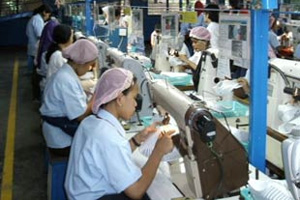
<a href="http://www.flickr.com/photos/28876688@N03/2697297098/">marissaorton</a>/Flickr
Read also: The Good, the Bad, and the Snuggly, MoJo’s gift guide for the little ones on your list.
Low points in recent toy-sweatshop history, as documented by the National Labor Committee.
1996: Haitians earn 7¢ for each Pocahontas T-shirt sewn; Wal-Mart sells them for $12.
2002: 80% of US toys now made in China.
2002: Guandong workers making toys for Mattel, Sega, and Wal-Mart use bare hands to handle toxic paints, glues, and solvents.
2004: Wal-Mart gives its Chinese toy factories 20 days’ advance notice of inspections.
2007: Chinese workers earn 53¢ an hour making Mattel’s Barbie Hug ‘n Heal Pet Doctor kit.
2008: Chinese teens found working 14 hours a day making Sesame Street toys.
2008: Employees of the Yongsheng Toy Factory spend 93 hours a week making Bratz dolls, with no extra pay for overtime.
2010: The International Council of Toy Industries, toy makers’ “social responsibility” group, still condones the use of 14-year-olds to make toys.















